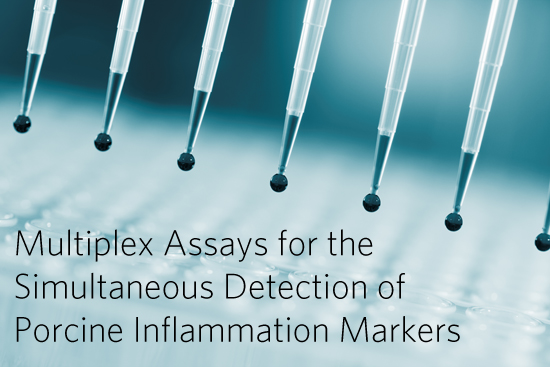
In the field of medical science, pigs are often used for study and analysis because they are physiologically similar to humans. Their physiological and anatomical makeup makes them perfect biomedical models for human diseases. Scientists and researchers often use them to understand how the human body works and how certain drugs and diseases affect us. However, the blood samples removed from each pig are very expensive and time consuming to study.
These samples are often studied for numerous reasons, so various markers are analyzed in each sample. With single-plex methods such as ELISA (enzyme-linked immunosorbent assays) each sample had to be tested multiple times to detect each marker. ELISA also required a fairly large amount of sample for each biomarker tested.
The purpose of the study published in Cytometry was to gain a better understanding of porcine inflammatory markers. Unfortunately, there is very little information about them, since the assays used to detect the various markers (cardiac and multiple inflammatory) is not commercially available. This led the researchers to the development of a bead-based multiplex assay that would be able to detect the following markers simultaneously:
- porcine cytokines: IL-1b, IL-6, IL-10
- tumor necrosis factor alpha (TNF-alpha)
- chemokines: IL-8 and monocyte chemotactic protein 1
- growth factors: basic fibroblast growth factor (bFGF)
- vascular endothelial growth factor (VEGF)
- platelet-derived growth factor-bb (PDGF-bb)
- injury markers: cardiac troponin-I (cTn-I)
- complement activation markers: C5a and sC5b-9
Comparing Results
To begin the analysis and to setup the multiplex assay, each antibody pair, diluent, and dilution factor was established for each marker. In this particular case, the researchers were looking for a more efficient method of testing each porcine sample.
When comparing the multiplex assay to the corresponding single-plex assay, they correlated well. The results between 6-plex and single-plex assays were remarkably close and were reported as follows:
- 0.9888 for TNF-a and 0.9945 for IL-1b
- 0.9965 for cTn-I and 0.9967 for IL-8
- 0.9968 for IL-6 and 0.9976 for IL-10
When comparing 11-plex and single-plex assays, the results were also similar.
By using Luminex® xMAP® Technology, researchers at the University of Bern were provided greater accuracy and more specific results when analyzing the pig-derived samples. They were also able to simultaneously check for a multitude of markers in each sample, which was previously difficult.
The researchers concluded that “[i]n this study, a bead-based porcine 11-plex and 6-plex assay with a good assay sensitivity, broad dynamic range, and low intra-assay variance and cross-reactivity was established. These assays therefore represent a new, useful tool for the analysis of samples generated from experiments with pigs.”
To find out how you can develop your own multiplex assays click here.
Porcine assays are also available from our partners. To locate these assays, please visit our Kit Finder tool.